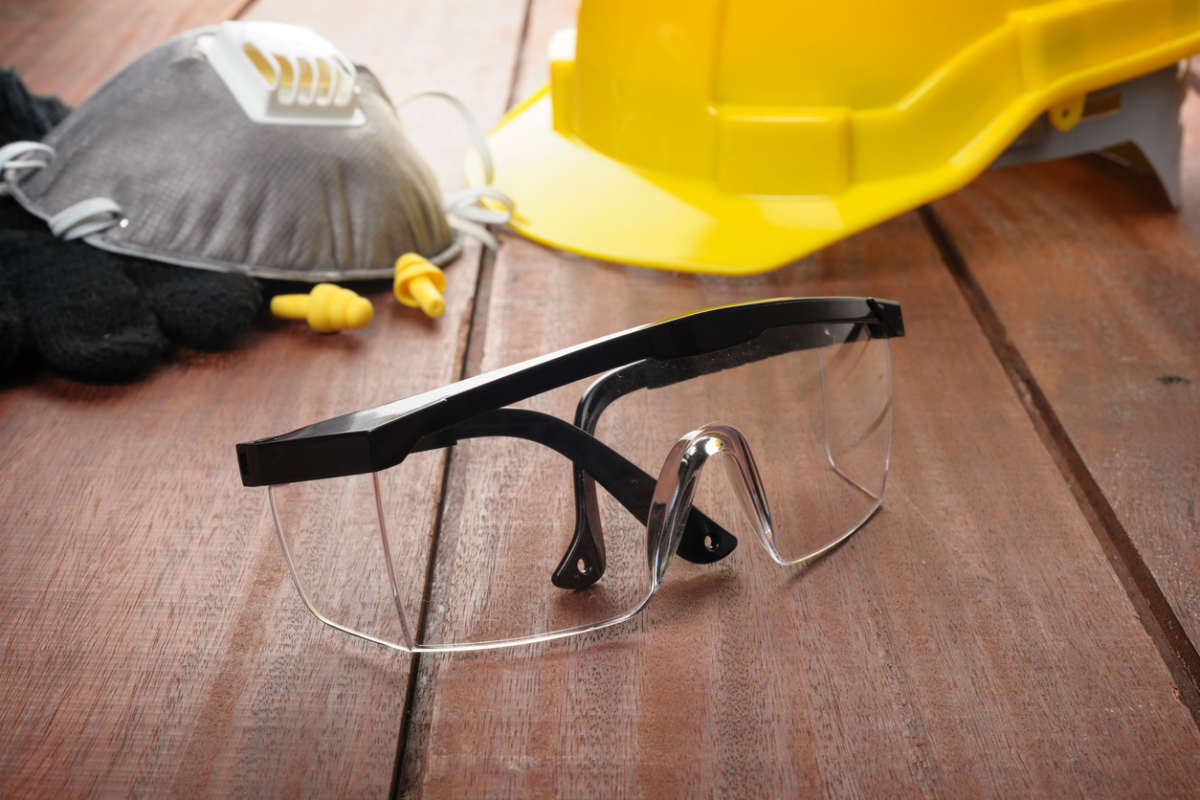Personal protective equipment offers protection against workplace injuries.
Around 700,000 work days are lost yearly due to injuries caused by personal protective equipment (PPE) failure. Different types of PPE are available depending on the type of job or the type of hazard. PPE offers protection against injury or illness resulting from contact with physical, chemical, radiological, mechanical, and electrical hazards. PPE is the last line of protection and indicates that the hazards cannot be controlled through engineering, design, or administrative controls.
FREE CONSULTATION

30 YEARS EXPERIENCE
OVER $100 MILLION COLLECTED
ONLY WORK COMP
This is the lawyer you want to hire! Just read the reviews. It is all true. Incredible! He will get you every dollar of lost wages, get you every ounce of medical treatment, and get you the highest possible award from the Division of Workers Compensation.
These reviews are correct. This attorney is incredible. He knows workmans compensation, fights for denied treatment and wages, and gets your on the job injury rated by the best doctors. I will be using him from here on our great experience.
The Law Office of James M Hoffmann was referred to me from a previous client, that was extremely impressed, with his service and outcome.
I met with Jim Hoffmann to discuss a car accident. Three cars were involved, my car was totaled, and I was seriously injured. After meeting with Jim the very first time, I immediately felt comfortable, and knew that he would have my back, and would fight for me.
Throughout my journey, I dealt with a lot of pain and several issues that lasted for years. During this time I had to contact Jim and Jamie (Jim’s wonderful assistant) many times. Every time I sent an email with questions, I received feedback extremely quickly!
I feel Jim negotiated a great settlement for me!
The Law Office of James Hoffman will be the first place I contact if I ever need his help again!
Suzanne Charles
Compensation? Get this lawyer. Simply better than all the rest.
Common Personal Protection Equipment
- eye and face protection
- foot and leg protection
- head protection
- hearing protection
- arm and hand protection
- respiratory protection
- protective clothing
OSHA does not mandate specific PPE for specific circumstances. However, it does require employers to identify hazards that require PPE, select appropriate safety equipment, and train workers on its proper use. Employers are required to use reasonable judgment to decide the kind of PPE required for a particular worker and under what circumstances.
Causes of PPE Failures
- Inadequate assessment by the employer – Failure of the employer to properly assess hazards can lead to workplace injuries, ranging from head trauma to chemical exposures.
- Poorly fitted PPE – Proper fitting is essential for PPE to work properly. This is particularly important when working with hazards such as heat, respiratory irritants, and chemicals.
- Insufficient worker training – Employers often fail to provide detailed training to workers on the proper use of PPE. The training should include:
- Improper PPE usage – Eye protection can aggravate, and gloves can limit dexterity. Workers often find respiratory protective equipment uncomfortable and feel it interferes with vision and communication. However, it is important to understand that the proper usage of PPE is essential for worker safety and well-being.
OSHA mandates medical clearance for workers who are required to use PPE on the job because it can cause serious medical problems, including asthma, heart attacks, and respiratory distress in workers who suffer from cardiovascular or respiratory problems.
- How to inspect PPE
- When to use PPE
- How to wear and adjust PPE
- Limitations of PPE
- How to remove, maintain, and store PPE safely
- Identifying and replacing damaged and worn PPE
St. Louis Injured at Work Attorney
You may be entitled to workers’ compensation benefits if you have been injured in a workplace accident despite wearing proper PPE. It is best to discuss your case with a St. Louis injured-at-work attorney. Call The Law Office of James M. Hoffmann at (314) 361-4300 for a free consultation.
Workplace Injury and Accident Causes
Asbestos Exposure
Asbestos Removal
Second Hand Asbestos Exposure
Sexual Assault Workplace
Physical Assault at Workplace
Workplace Injuries Assembly Line
At Fault Accident
Workplace Attack
Benzene Exposure
Injured on Lunch Break
Building Collapse
Workplace Bullying
Chemical Exposure in the Workplace
Chemical Hazards in the Workplace
Cold Stress in the Workplace
Combustible Dust Explosion
Computer Use
Construction Site Accident
Conveyor Belt Accident
On the Job Injury Cause by Coworker
Crane Accident
Injuries from Desk Jobs
Diesel Exhaust Fumes Exposure
Digging Injury
Breaking Company Policy
Drowning at Work
Workplace Drug Use
Electrical Workplace Accidents
Elevator Accident
Equipment Accident
Ergonomics in the Workplace
Excessive Overtime
Workplace Explosion
Extreme Danger
Fall at Work
Fire in the Workplace
Slicer Accident
Forklift Accident
Walk in Freezer
Gas Pipeline Accident
Hard Work
Workplace Hazardous Substances
Hazardous Equipment in the Workplace
Heavy Machinery Accident
Horseplay in the Workplace
Danger at Workplace
Insomnia in the Workplace
Jumping Accident
Ladder Falls at Work
Loading Dock Accident
Machinery Accident Workplace
Equipment Failure Accident
Mining Accident
Mold in the Workplace
Nail Gun Accident
Workplace Noise
Non Collision Accident
Heavy Objects
Workplace Office Equipment
Opioid Use
Injury at Work Due to OSHA Violation
Overexertion Injuries at Work
Use of Pain Killers
Power Tool Injury
Inadequate PPE
Repetitive Motion Injuries in the Workplace
Mansfield Bar
Scaffolding Accident
Secondhand Smoke in the Workplace
Side Effects
Silica Exposure
Sleep Disorder
Slip and Fall Injuries in the Workplace
Stairs at Work
Struck by a Vehicle
Tar Fumes
Toxic Chemical Exposure
Toxic Fumes in the Workplace
Car Accident While Working
Trench Collapse
Trips at Work
Unsafe Working Conditions
Workplace Violence
Welding Injury
Winter Hazards in the Workplace
Working Shifts

